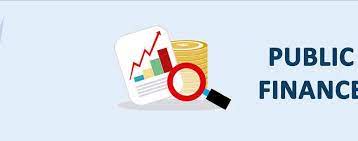Managing Financial Resources in a Health Care Organization
Abstract
Financial resources are critical to the operations of organizations in the sense that they promote efficacy through acquisition of human resources, equipment, and technology among other vital organizational elements. However, the management of financial resources is also a challenge as many cases of misappropriations are reported all over the world. In the health care sector, the management of financial resources is even greater considering that the sound financial resources management improve the quality of care given to the patients and save healthcare expenditures.
Unit 14 Assignment
Introduction
Financial resources are critical to the success of organizations because with sound financial backgrounds, the institution can achieve efficiencies in a number of areas. However, a robust financial background implies having effective and relevant financial management strategies. This is even more important when it comes to the health or social care sector where there are diverse departments and many personnel. This essay explains some of the aspects related to financial management in the health or social care sectors.
1.1The Principles of Costing and Business Control Systems
In the health or social care organizations, costing applies to the financial process of estimating the amount of money spent while generating services to patients or clients (Field & Brown 2007). In this regard, costing includes aspects such as estimating the money to be paid to healthcare workers for service deliveries and the amount spent on equipment used to deliver healthcare services among other activities that require expending financial resources (Field & Brown 2007).
In short, costing in the healthcare organization relates to estimation of financial expenditures. On the other hand, the business control systems apply to the different systems that collect and use information to evaluate the performances or efficiencies of the business operations of the organization such as those relating to finance (Broadbent & Cullen 2003).
There are different principles of costing and business control systems that are adopted to improve efficiency. One of the principles is integrity that means personnel charged with handling financial resources should act ethically (CIMA 2016a). Due diligence is another principle of costing and business control system and it means being keen to avoid errors. When undertaking costing and business control systems, employees are expected to be transparent hence this also a principle desired (CIMA 2016a).
There are also different elements related to the principles of costing and business control systems. One of the elements embodied in the principles of costing and business control systems concerns costs. Under costs, the organization estimates the entire expenditure spent on different activities and uses the costs to inform the development of an appropriate costing control system (Field & Brown 2007).
The second element present in the costing and business control system regards income that is the amount of money the organization is able to raise because of the services it provides. This element is critical to the establishment of the business control system because the amount of income determines the type of business control system to be adopted (Broadbent & Cullen 2003). The third element used in the costing and business control systems entail costs benefits analysis.
This means evaluation of the benefits and demerits associated with different costing and business control systems adopted. Another element of the costing and business control system relates to expenditure and this refers to the analysis performed with a view to determining the financial effect that the implementations of the costing and business control systems have on the organization (CIMA 2016b).
In the same vein, the element of budget is also associated with the costing and business control systems and the budget element is used to establish whether the costing and business control systems are affordable to the organization. Lastly, the element of capital is also vital to the principles of costing and business control systems since it is the capital that is used to allocate resources to the costing and business control systems in the organization (Broadbent & Cullen 2003).
1.2Information needed to manage financial resources
Management defines the process of controlling things while financial resources are the money the organization has at its disposal to spend and is available in different formats such as credit lines, liquid securities, and cash (Field & Brown 2007). The management of financial resources does not occur in a vacuum but instead require certain critical information. In the health or social care sectors, business costs arise from different components that also act as the key information necessary for the management of the financial resources.
One of the sources of information of business costs in healthcare regards the people. Under people, this means the service users, employees, and suppliers and the information originating from the people is essential to the management of financial resources (CIMA 2016b). Equipment refers to the entire tools and technology used in the healthcare facility to deliver services and because the organization spends a great deal on equipment, information from the equipment line is valuable when it comes to the management of financial resources (Field & Brown 2007).
The core of financial resources in the organization is the finance that encompasses all the funds that the organization has and handles. This information is necessary if effective financial resource management is to take place. Buildings are the housing resources that the healthcare organization has and the information from building is important in the management of financial resources because how buildings are used can provide indications of the financial flows (CIMA 2016a).
Consumable items are those items that are used recurrently such as paper, food, bed sheets, towels, and soaps to mention but a few. The information that arises from the use of consumables is significant in the management of financial resources because failing to establish the pattern may mean not having an appropriate control system. Administration refers to the process of management and because there are equipment, technology, and personnel tasked with the administration purposes, the information from administration is also key to the management of financial resources.
Lastly, income streams apply to the organization’s sources of income and this information is crucial for the management of financial resources because it helps to determine the balance between income and expenditure (HFMA 2015).
1.3The Regulatory Requirements for Managing Financial Resources
Regulatory requirements are the policies and legislations that control the financial operations in the organization. It is the regulatory requirements that function to align the financial operations of the organization with the statutory provisions standards expected. For instance, in the UK, the Health and Social Care Act of 2012, governs all the financial operations in the health sector (HFMA 2015).
In healthcare, there are external influences to business costs from a regulatory requirement perspective. One of the external influences to business costs revolves around changes in policies. When there is a change in healthcare policy, the organization has to embrace changes that will reflect the adaptation to the new policy and the integrations of the new requirements means expenditure (Lindsay et al. 2014).
Competitive factors such as the pricing of health care services or diagnostic costs also represent another external influence to business costs in the healthcare sector. With the competitive factors, the healthcare organization is forced to introduce new technologies or professionals and this means additional costs (Field & Brown 2007). Legal requirements are the other external influences that add costs in the healthcare sector.
The legal requirements imply that the organization has to be regulated by certain bodies and this implies subscription fees and other necessities to be fulfilled. The financial legislation and codes of practice also have their associated implementation costs and when the healthcare institution implements them, there are costs incurred. Another source of regulatory cost to the business is audit. Although internal auditors can undertake auditing activities, sometimes it is a requirement that external auditors have to be used.
In such case, external auditing firms have to be given the job at a fee or contract and this means additional costs to the business. Lastly, accountability is another external factor that influences business costs. Accountability generates costs in the sense that the organization has to implement systems and establish external associations to oversee accountability (Monitor 2016).
1.4Systems for Managing Financial Resources in a Health Care Organization
Systems for managing financial resources refer to the processes that healthcare organizations can use to manage their financial resources. There are different systems for managing financial resources on health care organizations. Sources of income are among the systems for managing financial resources in healthcare organizations. The sources of income entail the different ways that that the healthcare organization generate its income. For example, government funding and voluntary donations are sources of income to the healthcare institutions (Field & Brown 2007).
The advantages for using this system of financial resource management are that it readily identifies misallocated funds and promotes accountability in financial resources. Its disadvantage is that it focuses only on the income sources (Field & Brown 2007). Setting of budgets is another system that can be used to manage the financial resources of the organization and under budget setting, the healthcare facility outlines the different requirements and how the costs should be catered for (Broadbent & Cullen 2003).
For example, the healthcare organization can peg the yearly costs that are expected to run the different activities in the organization. The advantages of this system are that it establishes the variances and identify the effective departments. On the other hand, setting budgets prevent flexibilities in terms of operations and therefore its demerit. Like setting of budgets, administration of budgets is also another system that can be used to manage the financial resources.
Administration of budget is a system of managing the financial resources of the organization whereby a detailed financial plan for a given period is prepared (Field & Brown 2007). This is usually done on annual or quarterly basis. The advantages of administration of budgets are that it facilitates the control of financial resources on a daily basis and tracks the costs associated with supervisory and non-production aspects.
However, its main limitation is that it is time consuming (Broadbent & Cullen 2003). Another system of managing financial resources in healthcare organizations is the creation of cost centers, which are departments, charged with calculating revenues and costs of the healthcare institution (Field & Brown 2007). The advantages of cost centers include facilitating quick control of financial resources and they are motivational to the managers and employees.
However, they can be a source of pressure to the staff members hence the disadvantage. Accountabilities are systems that use transparency principles as a way of managing the financial resources in the healthcare organization. The advantages of accountabilities are that they promote responsible use of financial resources in the organization and they improve the image of the organization. Nevertheless, implementation of accountabilities means extra spending and more costs to the organization.
Finally, auditing can also be a system for controlling financial resources through the identification of gaps in usage of financial resources. The advantages of auditing are that it can help to detect hidden malpractices and can also be used to establish the trends in the financial spending. In the same vein, auditing requires investments of time and other resources hence the disadvantage (Field & Brown 2007).
References
Armit, K. and Oldham, M., 2015. The Ethics of Managing and Leading Health Services: a view from the United Kingdom. . Asia Pacific Journal of Health Management, 10(3), pp.118–121. Retrieved, 2016 from Ebscohot.com
Ball, R., Eiser, D. and King, D., 2013. Assessing Relative Spending Needs of Devolved Government: The Case of Healthcare Spending in the UK. Regional Studies, 49(2), pp.323–336. Retrieved, 2016 from Ebscohot.com
Broadbent, M. and Cullen, J., 2003. Managing financial resources. Oxford: Butterworth-Heinemann.
CIMA, 2016a. . [online] CIMA Financial Management Magazine | Chartered Institute of Management Accountants. Available at: <http://www.fm-magazine.com/> [Accessed 15 Nov. 2016].
CIMA, 2016b. HELPING PEOPLE AND BUSINESSES TO SUCCEED. [online] CIMA. Available at: <http://www.cimaglobal.com/> [Accessed 15 Nov. 2016].
Field, R. and Brown , K., 2007. Managing with plans and budgets in health and social care. Exeter: Learning Matters.
Want help to write your Essay or Assignments? Click here









